Here are some ideas on what to use to make the most of your balcony space, helpful self-watering resources, and 13 of the best vegetables to grow in small spaces.
Balcony Vegetable Garden- Essential Equipment
When you plan you balcony vegetable garden, space is definitely the most important consideration. There are several ways to maximize your space to grow a wide variety of veggies that you can use in dishes you make in your own kitchen.
Vertical Garden Options
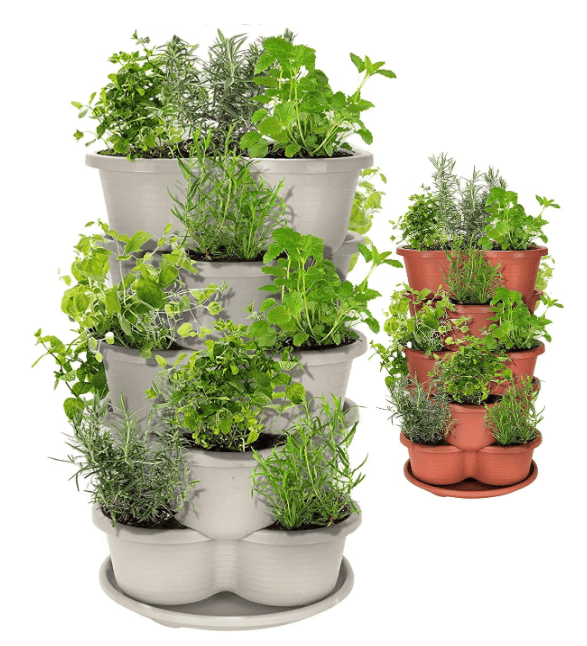
Vertical gardening is a great way to maximize this space. Amazon has this neat and inexpensive stackable garden tower that includes five tiers with 15 little spots for plants. It is only 24 inches tall, so you may want to put it on something to elevate it and rotate the tower every few days to make sure all the plants have access to sun.
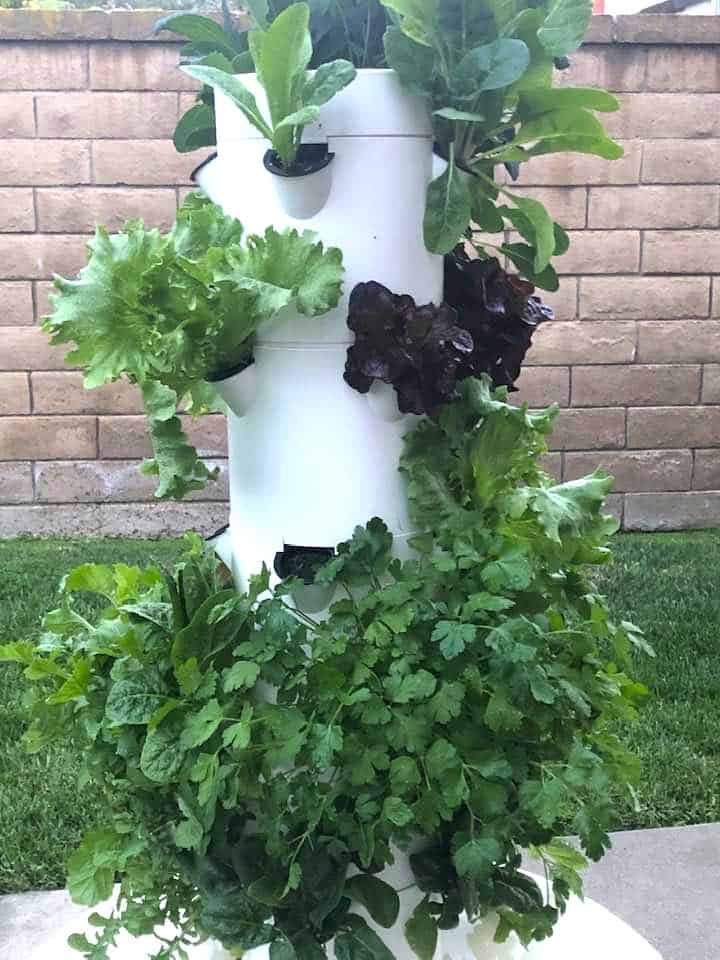
Another more expensive but overall better option is the Tower Garden. This gardening system uses hydroponics to grow a large amount of food in a small space. It reduces water usage by 95% in comparison to conventional gardening which is a big plus in drought-prone areas like California.
Using a self-watering sytem means that you won’t have to worry about watering your balcony vegetable garden every day and you can even be gone for a week and not have to worry about someone checking on your plants.
The Tower Garden is 62 inches high, and its water reservoir, which can hold 20 gallons of water, has a diameter of 30 inches. So it can fit in a space that is three feet square but since plants grow out of it, it is good to not place it right up against a wall.
I also suggest putting it on wheels (just buy a round planter base like this one at your local garden center) so that you can rotate the garden easily to distribute sunlight.
You will need access to electricity since this system uses a pump to move water up to the top of the Tower Garden. I have had my Tower Garden on my backyard patio for nearly a decade now and find that it is best for growing greens, peppers, strawberries, and herbs. You can buy an attachment cage to grow vining vegetables as well like tomatoes and cucumbers.
There is one major drawback to the Tower Garden. It is expensive. It is about $700 to buy the system which includes the tower, a pump, a variety of seeds, the rockwool which the seedling grow in, and the growing solutions which act as organic fertilizers for the plants. But, if you use it frequently, it will pay for itself in organic produce eventually.
Aeroponics sells a system that seems to be incredibly similar to the Tower Garden but it is currently only $450. It does not include seeds. The tower comes with everything you need for your first planting except for plants. Cups, rockwool pods for planting seeds, minerals A/B, and pump are all included. I have not personally used this system so I can’t vouch for it, but the reviews are good.
Replacement rockwool and hydroponic growing minerals can be purchased on Amazon and used with both systems. You will also want to check the PH of your water and adjust as needed to make sure your plants are growing in optimum conditions.
Self-Watering Raised Gardens
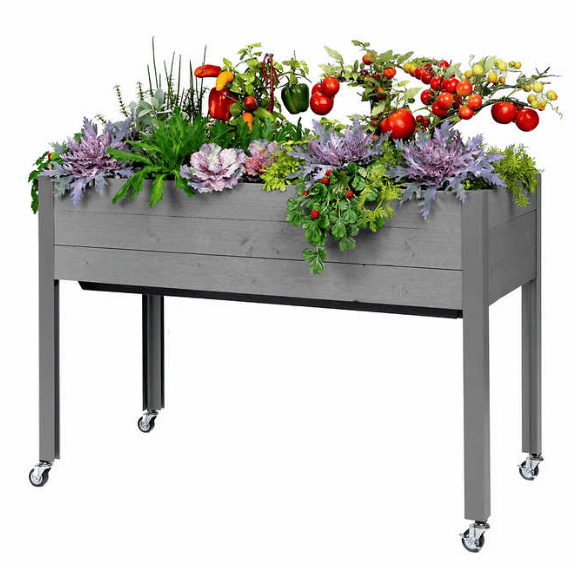
If you are like me and have a bad back, you know might want to have a raised garden on your balcony. I purchased this self-watering elevated planter from Costco last year and I have really liked growing things like lettuce, strawberries, peppers, and herbs in it.
I have found that newly planted crops with shallow roots don’t initially benefit from the self water feature so I do still have to water it regularly. Still, it is very easy to access and since it is on wheels, it is easy to move around.

Amazon has a variety of other options as well, including one garden that has multiple configuration options which will help you make the most of your balcony garden.
Self-Watering Drip Irrigation Kits

Of course, most balcony gardens have several different pots that will need to be watered, and daily watering can be a major pain. Using a solar powered irrigation system on a timer can be life changing. These are also great for when you go on vacation and don’t want to ask your neighbors to be plant babysitters.
The 13 Best Things to Grow in Your Balcony Vegetable Garden
There are several different herbs and foods that you can grow in your balcony vegetable garden. Here are some veggies that grow especially well in small spaces.
1. Lettuces

Lettuces are extremely easy to grow from seed and don’t take up much space, making them perfect for your balcony vegetable garden.
The key to always having lettuce for your salad is to sow seeds in succession. This means you plant seeds about 10-20 days apart to ensure you plants mature at different rates.
Some of my favorite lettuces to grow in small spaces are butterhead lettuce, red leaf lettuce, and romaine. Keep in mind that lettucess are generally not heat tolerant and do best when the weather is below 90 degrees. Their happy place is when highs are in the 60s and 70s.
2. Swiss Chard
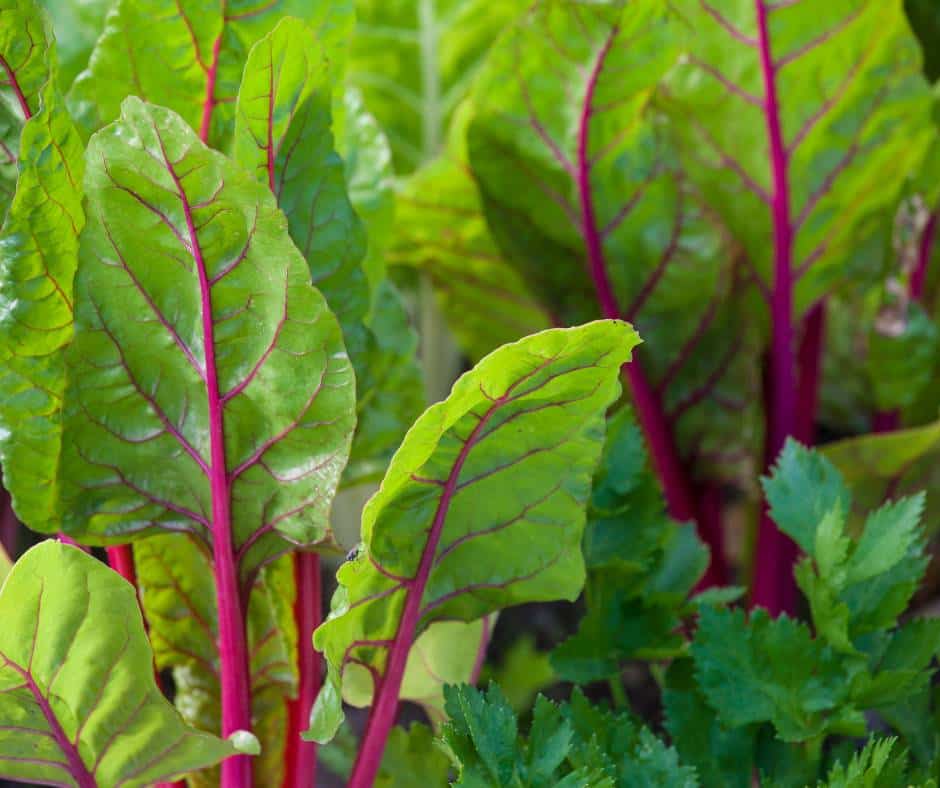
Swiss chard is a hearty green that can stand up well to cooking and provides plenty of nutrition. Chopping this vegetable up and adding it to soups, stir fries, casseroles, and pasta dishes like lasagna is a great way to make the dish more healthy.
Chard can be grown in containers, making it suitable for small spaces like balconies. It also pairs well with other vegetables like beans, peas, tomatoes, and herbs in your garden.
Choose a container that is at least 12 inches deep to allow for proper root development. Chard leaves can be harvested as baby greens or allowed to reach full size. Pick the outer leaves regularly to encourage new growth. You can continue harvesting from the same plant throughout the growing season.
Growing Swiss chard from seed is very easy. First soak your seeds in water for 15 minutes immediately before sowing. Then, plant your seeds ½ inch below the soil. Germination takes one to two weeks and is best done between 50 and 80 degrees. You will have mature plants in 10-12 weeks.
Regular Swiss chard is a good option but rainbow chard is a more beautiful addition to your garden. It produces plants with yellow, red, pink, and white stems.
3. Arugula

Arugula is my favorite green to add to a salad. Technically an herb, it has this peppery, mustardy bite that brings more flavor to dishes. It is a welcome addition to pizzas, sandwiches, quiches, and pesto.
Arugula is incredibly easy to grow at home in your balcony garden, and if you grow it in two week successions, you will have a harvest all season long.
Seeds are easy to germinate and should be covered with just a quarter inch of soil. In just a week sprouts will begin to appear. Harvest your arugula when stems are about 2-3 inches tall which take will take about 4-6 weeks from seed planting. If you let arugula stems grow too big, they will get tougher and more bitter.
Arugula made our list of the best herbs to grow in Southern California.
4. Radishes
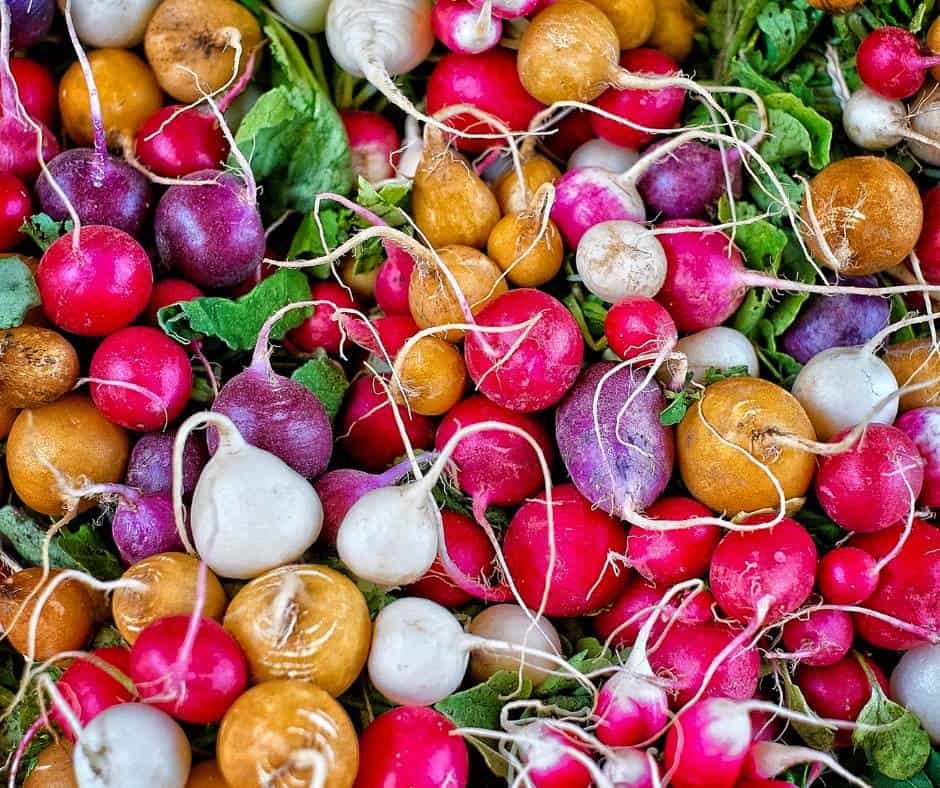
Radishes are one of the easiest things to grow in a balcony vegetable garden. They grow easily from seed, don’t take long to mature, and provide a nice bite when the bulbs are sliced in salads. You can even add their tops to salads as well.
Radishes do best in cooler weather (below 75) but a frost will kill them. They are best suited for summer and fall if you live in an area that does receive frost. You can plant seeds an inch apart and 1/2 deep. They can usually be harvested 3-5 weeks after planting.
Radishes come in such a beautiful variety of colors and shapes. I love the Baker Creek Heirloom Seeds Easter Basket Mix which contains about 15 varieties.
5. Tomatoes
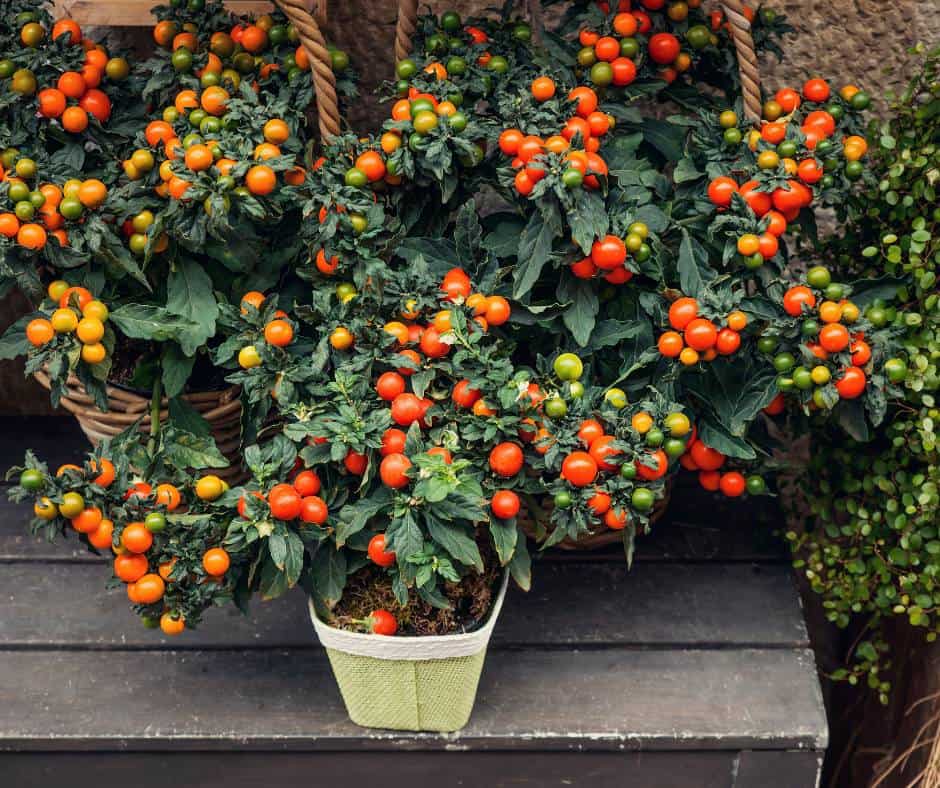
Tomatoes taste so much better when they are homegrown! The difference in flavor is truly remarkable. If you haven’t grown your own tomatoes before, make this year the year you do it!
Most tomatoes at the grocery store are picked when they are green to help them survive shipping and prolong shelf life. This does not allow the sun to sweeten the tomato and add more flavor. A homegrown tomato can be picked at peak ripeness, resulting in a much better tasting tomato.
It is important to pick the right tomatoes to grow in your balcony vegetable garden. Luckily, there are several great options for small spaces. Tomatoes prefer hot weather and plenty of sun, so give them the sunniest spot on your balcony.
Many cherry and grape tomatoes varieties have been cultivated to grow well in containers. The most easily available as seedlings are Better Bush and Sungold, but check your local garden center to see what they have.
Bush Early Girl and Bush Beefsteak are nice options for containers and they produce more standard-size tomatoes that are great for slicing and salsa. If you are interested in making fresh sauces or canning, Roma tomatoes can be grown in containers as well.
Of course, tomato planting isn’t foolproof, but I have all the secrets to a bumper crop. Check out my article filled with tomato growing tips.
Running into problems with your tomatoes? Here is an article dedicated to tomato plant problems and how to fix them.
6. Kitchen Herbs
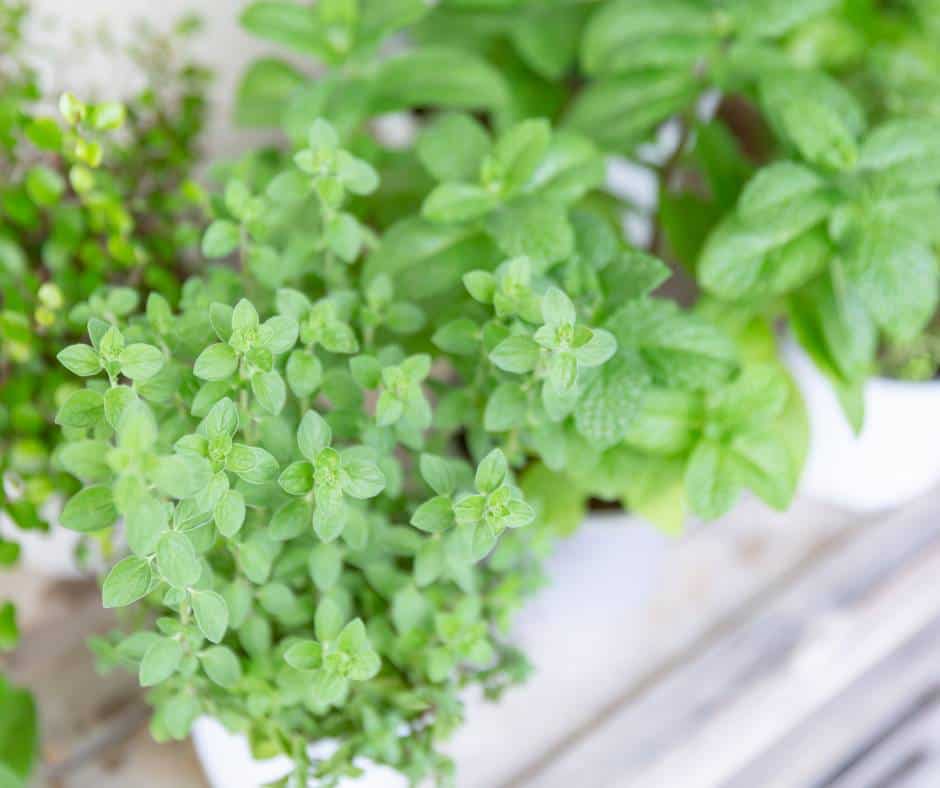
No balcony vegetable garden is complete without some of the most common herbs used in the kitchen. Purchasing fresh herbs at the grocery store can be expensive but growing them is easy and they all tolerate small spaces.
I prefer to buy many of my kitchen herbs as seedlings from my local garden center. I always have basil, oregano, thyme, and sage on hand. They can all grow in the same space, though oregano can take over a pot easily, so be sure to keep it cut back or move it to its own small pot.
Cilantro and parsley are easy to grow from seed but they bolt quickly if it is warm, so I tend to only stick to cool season plantings.
I have a bay laurel plant on my patio so I always have bay leaves on hand. These small trees do well in a container. Rosemary is grown as a hedge in my area and many of my neighbors have it and are willing to share, so I skip it.
Mint is a plant that you should only grow in containers because it has a tendancy to take over a yard if given the chance. Your balcony garden can have several small pots filled with interesting mint varieties like chocolate pint, pineapple mint, and peppermint.
7. Upright Squash
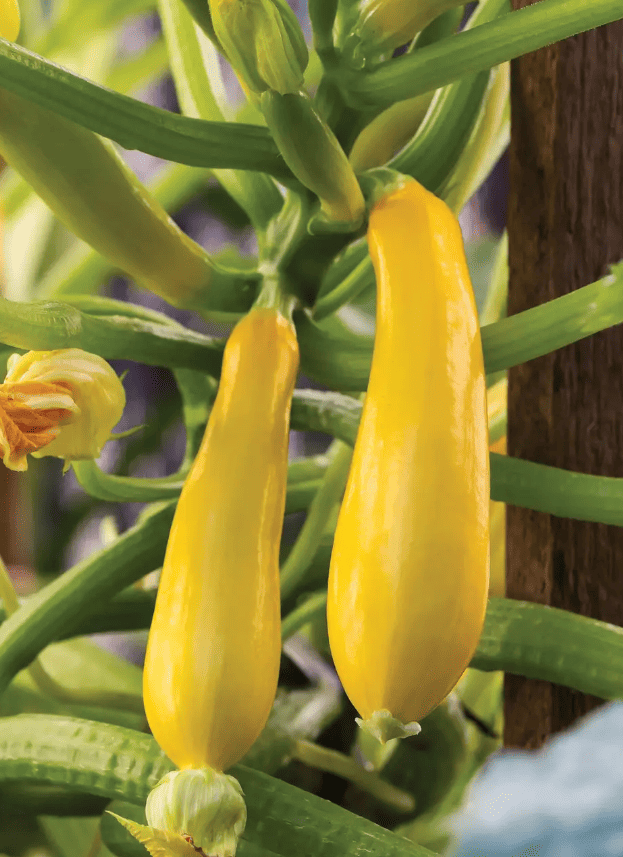
Summer squash grows like a weed in hot weather, but it also takes up quite a bit of space, so most people don’t grow them on their balconies. But recently, there was an exciting development in the world of squash…
Burpee is selling a Rise and Shine Hybrid summer squash which is essentially a yellow zucchini, and it grows upright! You will need to stake it like a tomato plant but when you do you will get a plant that can grow up to four feet high with a three-foot spread! That’s pretty compact! And the plant is quite prolific in its production, especially when the weather heats up.
Squash need pollinators like bees or other insects in order to transfer the pollen from the male flower to female flower. If you don’t have pollinators in your area, you will have to hand pollinate which is easy. Here is a great video explaining how to do it:
8. Cucumbers
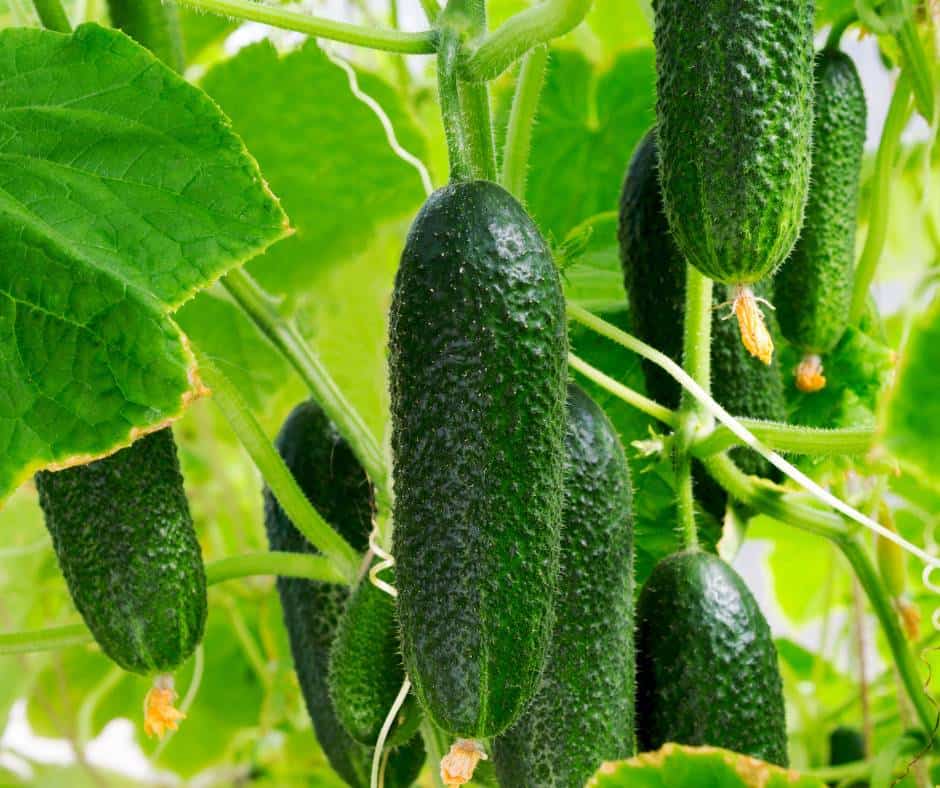
Growing cucumbers in pots is a great option for those setting up a balcony garden, just be sure to put the plant in a pot that is 12-18 inches deep and wide to provide enough room for the cucumber plant to grow.
If starting from seeds, plant a few seeds about one inch deep in the center of the pot. Once they germinate, thin out the weakest seedlings, leaving only one or two plants. Or, take the easy route like I do, and purchase seedlings at the garden center.
Cucumbers are vining plants that benefit from vertical support. You will need to provide a trellis or a tomato cage for the plant to climb.
Cucumber plants do require pollination for fruit set. If you don’t have pollinators nearby, you will need to hand polinate like the squash plants (see above).
9. Peppers
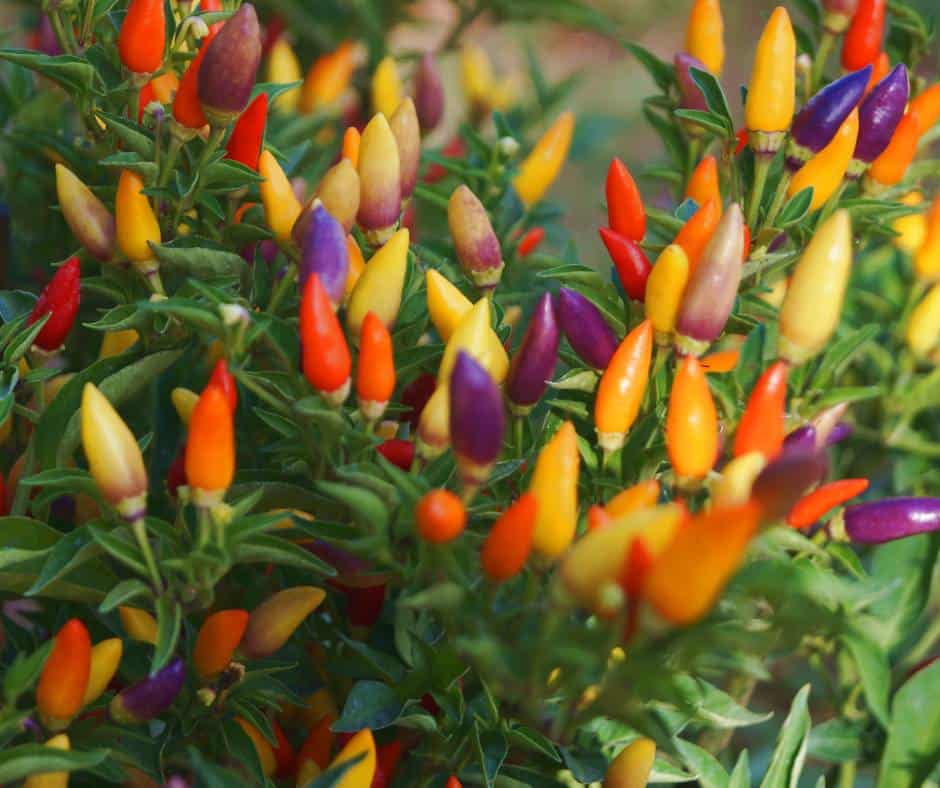
I love growing peppers! There are thousands of pepper varieties available, each with its unique characteristics in terms of flavor, heat level, shape, size, and color.
I always plant jalapenos, a pepper for stuffing like Anaheim or pasillas, purple bell peppers because the are pretty and tasty, and shishito peppers which are great stir fried with oil and salt. I also try to plant a new-to-me variety each year.
Peppers are easy to grow in pots. They typically need a pot that is at least 12-16 inches in diameter and has drainage holes at the bottom so the roots don’t rot. Peppers love sun, but if temperatures got super hot, like above 90, it can burn them a bit so a little shade during heat waves can be a good thing.
10. Peas

Fresh peas are the best and you can enjoy them by growing them easily right on your balcony! All you need is a pot and a trellis (if you pick a vining variety). Choose a well-draining pot that is at least 12-18 inches deep and wide. Sow the pea seeds directly into the pot, planting the seeds about 1-2 inches deep.
Peas are typically ready for harvest around 60-70 days after planting, depending on the variety. Harvest the pods when they are plump and the peas inside have developed. Pick the pods regularly to encourage continuous production.
Tom Thumb is an extremely compact pea variety, reaching only 8-10 inches in height. It’s perfect for small pots and produces sweet, tender peas. Little Marvel is a popular dwarf variety that grows to about two feet in height. It produces a bounty of sweet and flavorful peas.
If you are looking to plant snap peas, Oregon Sugar Pod is a snap pea variety that grows to about three feet tall. It produces stringless, crisp pods that are delicious in stir-fries and salads.
11. Green Beans
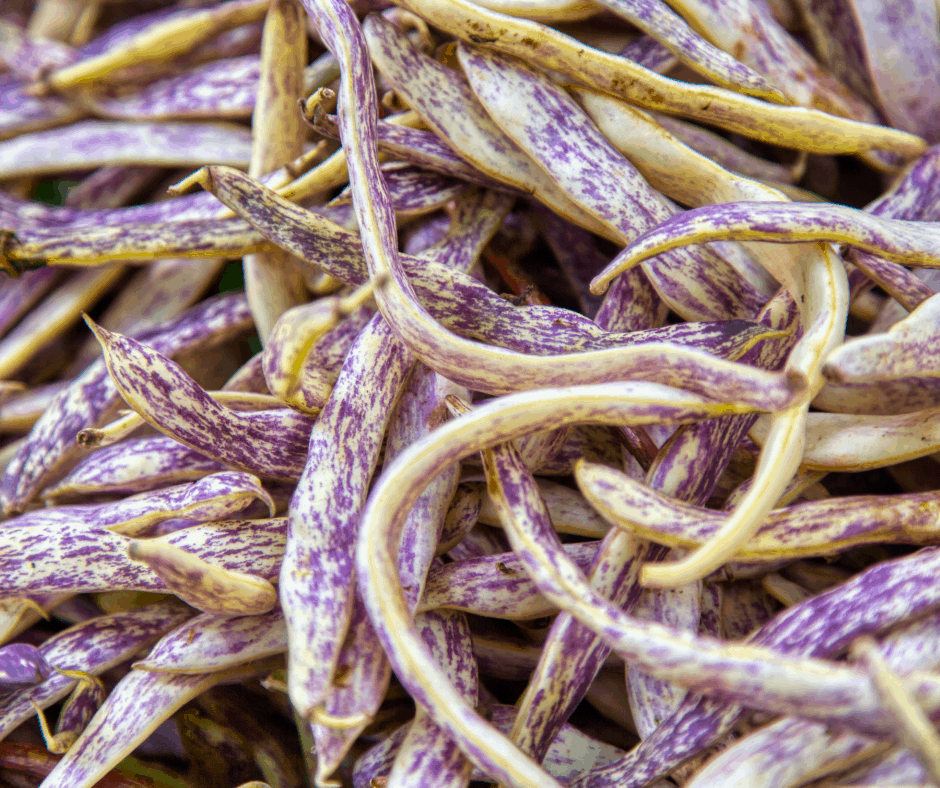
Growing pole beans in pots can be a rewarding experience because fresh green beans are tasty right off the vine. They are easy enough to grow in pots as long as you plant them in well-drained potting soil that is in a pot that is at least 12-18 inches in diameter and depth.
It is important to plant beans when soil is warm (minimum 60 degrees). They also need to be trellissed since pole beans are vining beans.
Kentucky Wonder is a heirloom variety is a classic pole bean with a rich flavor. It produces long, stringless pods and is known for its reliable yield. If you are looking for a show stopper, check out Scarlet Runner which is prized for its beautiful red flowers and edible pods. It’s a vigorous climber that adds visual appeal to the garden.
If you choose to plant a bush bean, I highly recommend the beautiful dragon tongue bean plant that has green pods that are striped with purple and has a delicate flavor.
12. Carrots
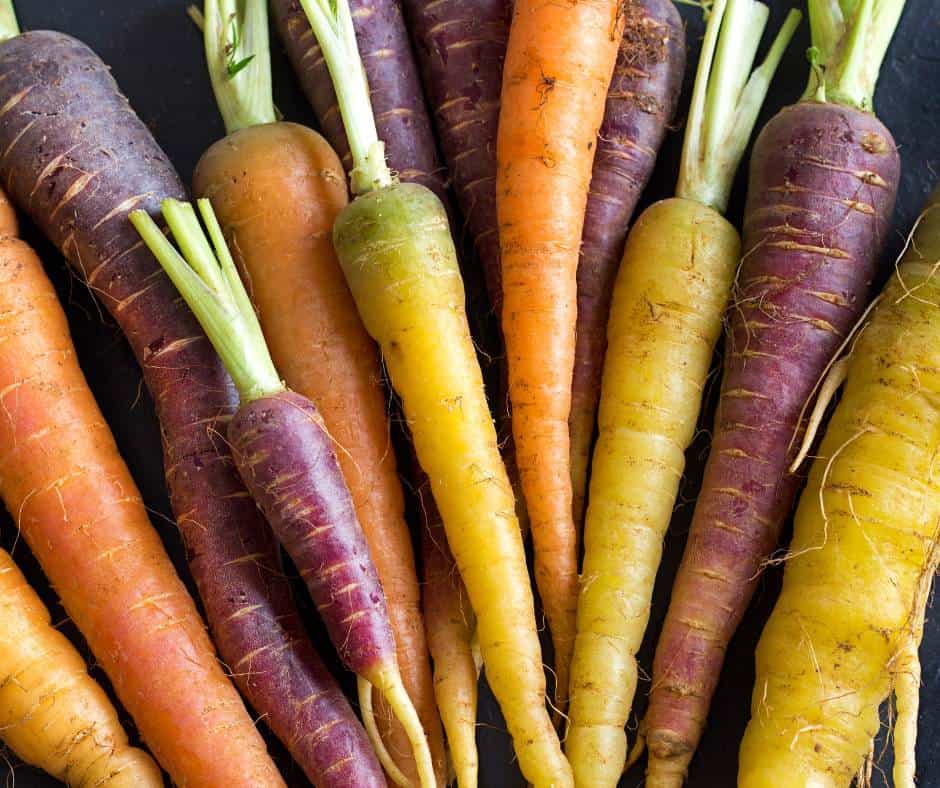
Carrots are a fun and easy vegetable to grow on a balcony. I like to grow my carrots in window boxes because they are deep enough to handle the carrot’s root but don’t take up too much room. Make sure your soil isn’t too dense- you want those roots to grow easily!
Carrots need regular watering, especially during dry spells, to prevent them from becoming tough or cracked. Water deeply to ensure that the moisture reaches the deeper roots. Using a drip water system is a good idea. They prefer cooler temperatures and are a great veggie to grow in the spring or fall.
Some carrot varieties that are well-suited for container gardening include Thumbelina, Paris Market, Little Finger, and Nantes. These varieties tend to be smaller in size, mature quickly, and have a good flavor. I like to grow varieties that aren’t easily found in grocery stores like Cosmic Purple.
13. Beets
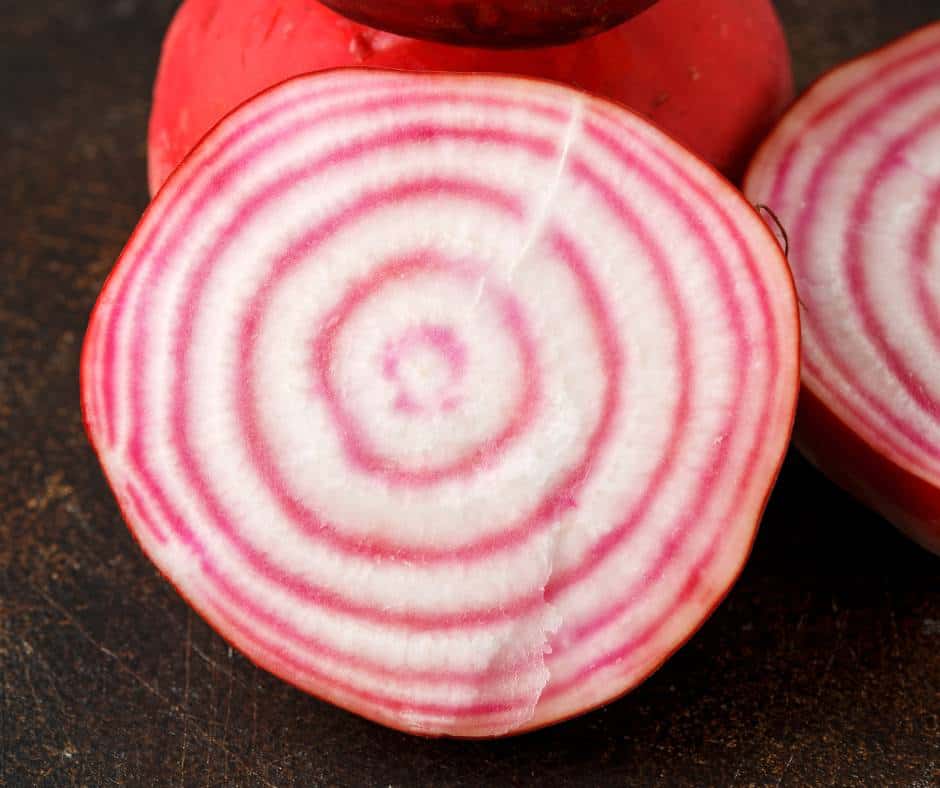
Last but not least is the mighty beet. For many years, I was not a fan of beets. I thought they tasted like dirt. But I knew they were good for me so I persisted in trying them, and now they are one of my favorite vegetables!
Choose a container that is at least 8-10 inches deep to allow room for the beet roots to develop. The container should also have sufficient width to accommodate multiple beet plants. A rectangular or round container works well for growing beets.
You are better off sowing beet seeds directly into the container instead of trying to transfer seedlings. Scatter the seeds evenly over the moist soil surface, leaving about two inches of space between each seed and cover them with about a 1/2 inch of soil.
Beets like cooler temperatures and can tolerate some shade, especially in warmer climates, but at least 4-6 hours of sunlight daily is preferred. Beets are typically ready for harvest 55-70 days after sowing.
Beet varieties that are well-suited for container gardening include Babybeat, Bull’s Blood, Cylindra, and Detroit Dark Red. These varieties are known for their compact size, quick maturity, and good flavor. I also love chioggia beets because the red and white stripes are so lovely.
]]>I have been an avid backyard farmer for over 20 years, and always have something tasty growing in my backyard garden. Decades of trial and error have taught me what thrives and what doesn’t. Here are the best vegetables to grow in Southern California.
The Best Vegetables to Grow in Southern California
1. Tomatoes

If you ask me, the absolute best vegetables to grow in Southern California are definitely tomatoes. Sure, they are technically a fruit, but we tend to lump them in the vegetable category when we think about food and crops.
Tomatoes taste so much better when they are homegrown! The difference in flavor is truly remarkable.
Most tomatoes at the grocery store are picked when they are green to help them survive shipping and prolong shelf life. A homegrown tomato can be picked at peak ripeness, resulting in a much more flavorful tomato.
The other great thing about growing tomatoes in your backyard is that you can grow a wide variety of heirlooms, slicing tomatoes, canning/sauce tomatoes, and pop-in-your-mouth-directly-from-the-vine cherry tomatoes.
Of course, tomato planting isn’t foolproof, but I have all the secrets to a bumper crop. Check out my article filled with tomato growing tips.
Running into problems with your tomatoes? Here is an article dedicated to tomato plant problems and how to fix them.
2. Eggplant
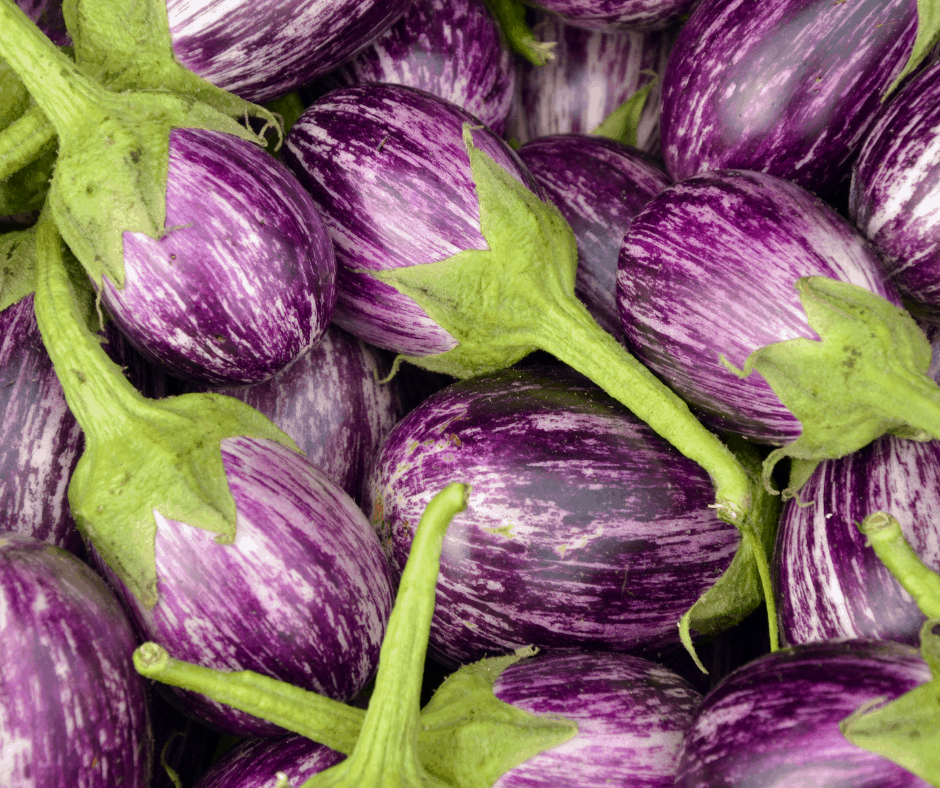
Eggplants have become a mainstay of my Southern California vegetable garden. They grow so well with little effort, and it is fun to grow beautiful heirloom varieties like the lavender Rosa Bianca eggplant variety. If you love to cook Asian food, consider growing the slender Japanese eggplant variety as well.
If you live in an are that doesn’t receive frost, your eggplant may become a perennial (ie: it grows year round). I simply cut my plant back in the fall when temps decline and let it winter over. New sprouts will start popping up in early spring.
3. Peppers
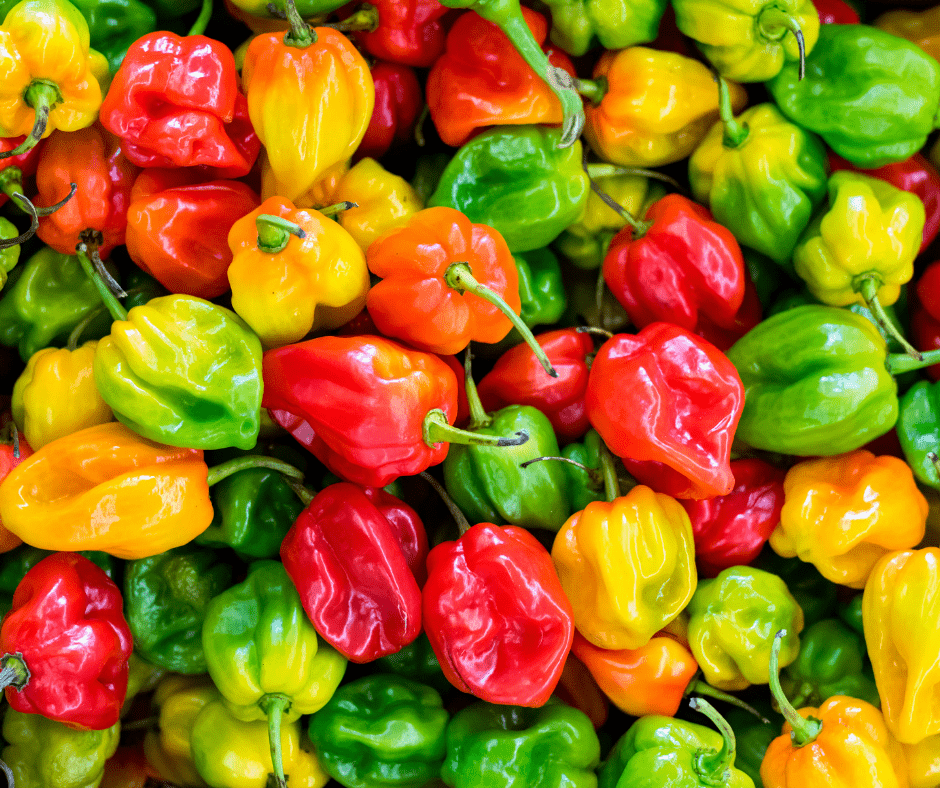
Pepper are another one of the best vegetables to grow in Southern California. They love heat and dislike cold temps, so they seem to be quite happy here in SoCal.
There are so many pepper varieties, and I encourage you to try a new one each spring, especially if you like a little heat in your dishes. I always have jalapenos and stuffing peppers, like poblanos, growing, but I also like to try less common options and discover new favorites.
Of course, not all peppers have to be spicy. Bell peppers are a good option for your Southern California vegetable garden as well. I like to grow purple bell peppers to add color to my garden and add pizzazz to dishes like fajitas.
4. Summer Squash
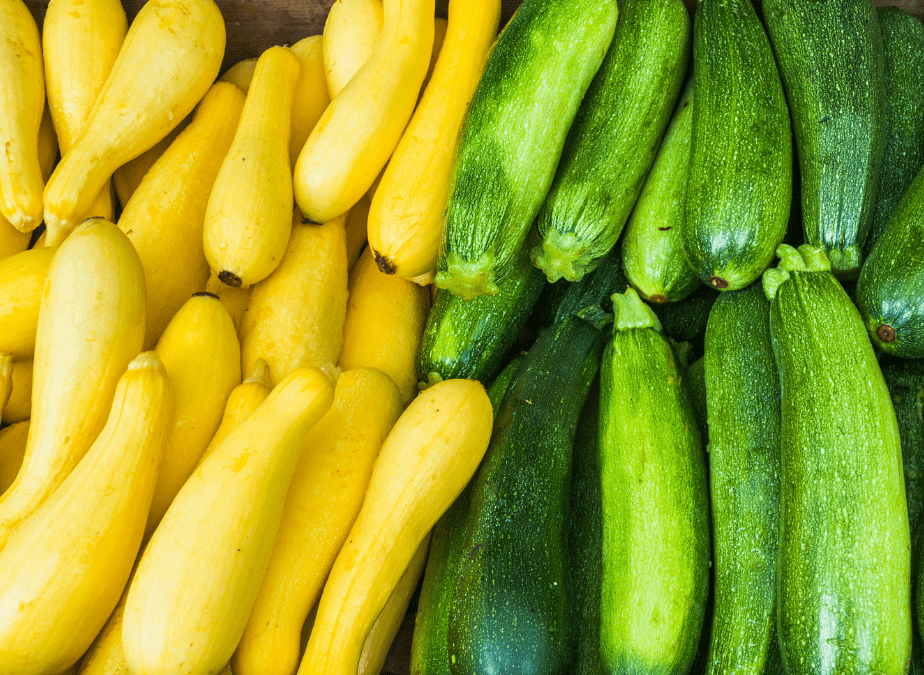
Summer squash grows like a weed in hot weather, so it is no surprise that it does well in our warm Southern California climate. It is one of the best vegetables to grow in Southern California, especially if you live in an inland valley.
My favorite summer squash to grow is zucchini. Once hot weather and peak production sets in, be sure to check your plant daily because zucchinis grow quick!
A monster-sized zucchini is fun to grow but it does lose flavor, so stick with small and medium-sized zucchinis for your dinner plate. Huge zucchinis are great for zucchini bread, however, so grate them and freeze them in Ziploc bags for future use.
Other summer squash that I have had success with are yellow crookneck squash and green or yellow patty pan squash. They each have their own unique flavor.
5. Winter Squash
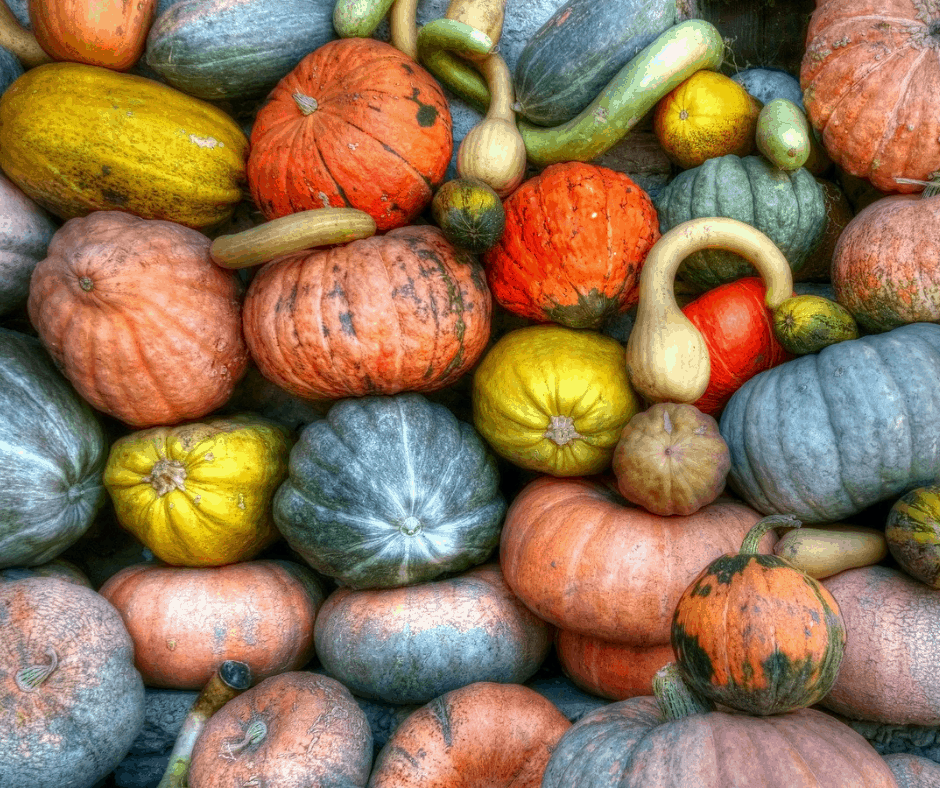
Some of my favorite squash are winter squash. Butternut squash, spaghetti squash, acorn squash, and pumpkins all fall into this category.
The funny thing about winter squash is that you still plant it at the same time as summer squash, in early spring. Winter squash just have a much longer growing season.
Summer squash plants tend to be bushy and winter squash are typically vine plants. Those with smaller spaces might want to trellis these plants. Burpee now has a very cool variety of upright growing squash that I just ordered. I can’t wait to see the results!
6. Greens
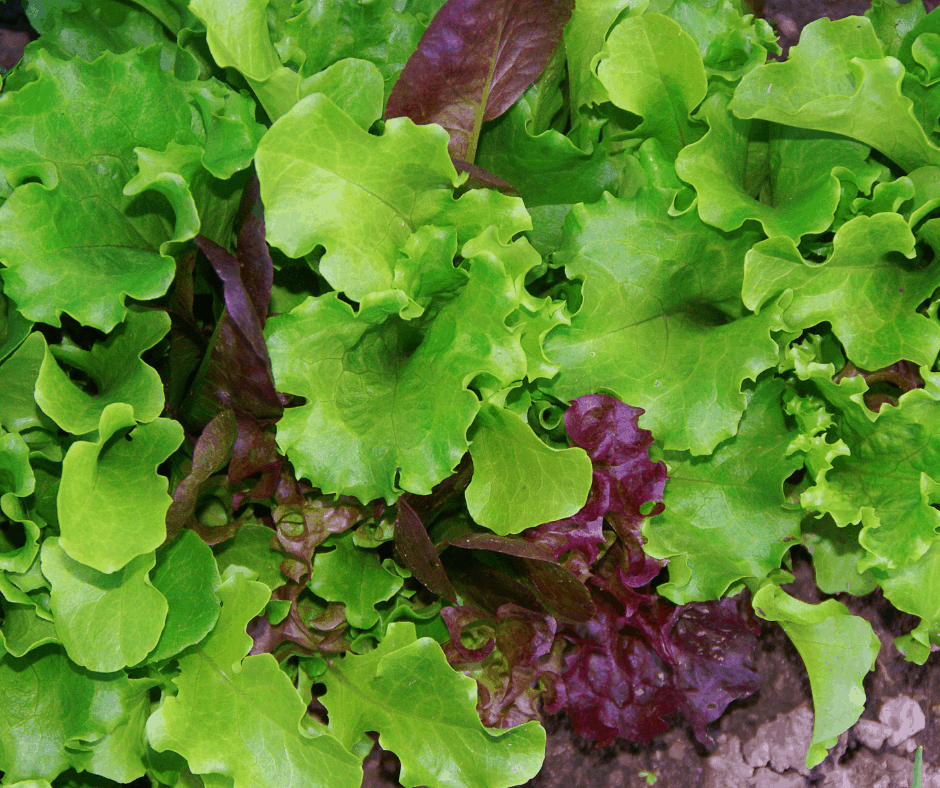
There is something very satisfying about growing a salad. Most lettuces and salad greens like arugula and kale grow quite fast, so you can have a bountiful crop in a short period of time.
I grow my greens in an aeroponic Tower Garden which allows me to grow plenty of salad in a small space, and also happens to be very pretty to look at.
If you don’t want to invest in aeroponics, fear not! Greens still grow well in garden beds and small containers.
The key to always having greens is to sow them in succession. This means you plant seeds about 10-20 days apart to ensure you plants mature at different rates.
Greens are generally not heat tolerant and do best when the weather is below 90 degrees. Their happy place is when highs are in the 60s and 70s.
7. Radishes
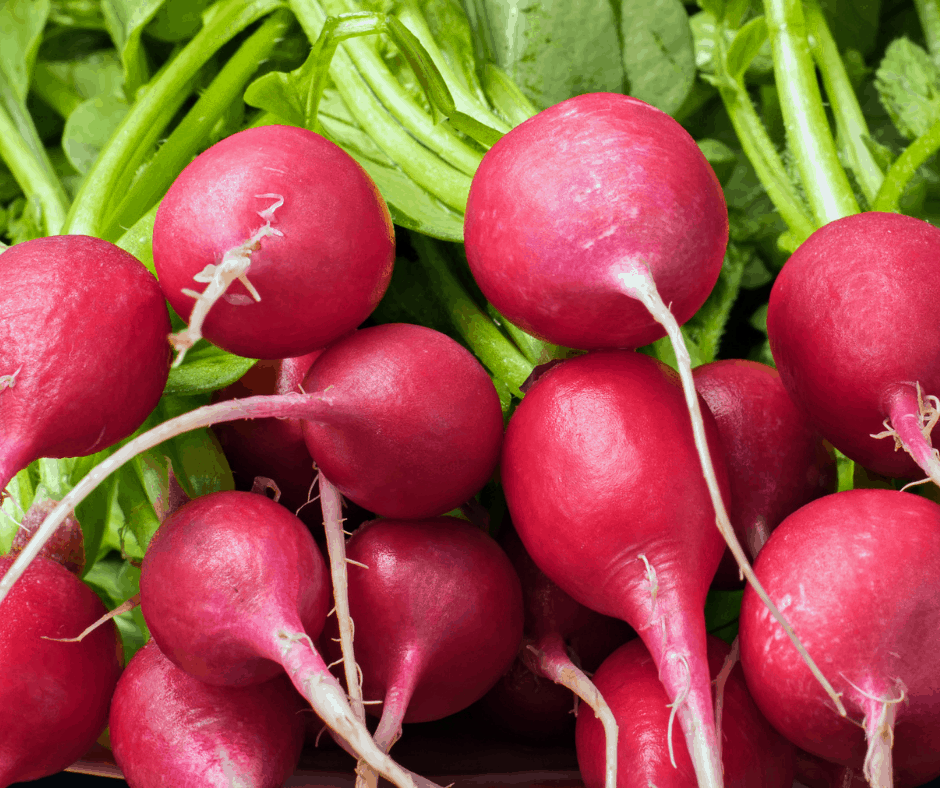
Radishes are a fun addition to a Southern California vegetable garden during the late winter and early spring. Like lettuce, they don’t take long to mature, so you can enjoy your harvest quickly.
If you have young children, growing radishes is a good way to introduce them to crop lifecycles. They grow easily from seed, don’t take long to mature, and are fun to pull up out of the ground.
Radishes are easy to grow in containers as well so if you are short on space, give them a go! Don’t forget to use their tops in salads!
Radishes come in such a beautiful variety of colors and shapes. I love the Baker Creek Heirloom Seeds Easter Basket Mix which contains about 15 varieties.
8. Onions
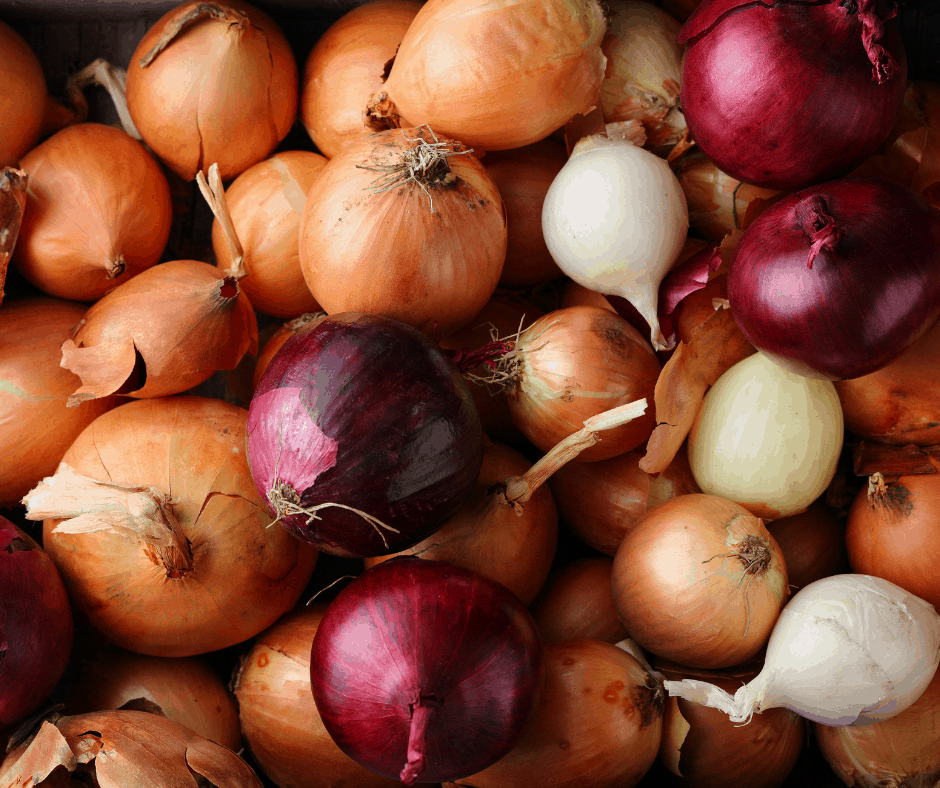
Onions are so easy to grow and used constantly in meals, so why not grow some yourself? I have found that if I plant onions starts in between my tomato plants, it helps reduce pests.
I tend stick to green onions or small bulb white onions, but the sky is really the limit. You can even grow onions from the bottoms of discarded green onions in water, wait for new shoots to come up, and then plant them in the ground.
The other nice thing about growing onions is that they keep in the ground for a long time, so you can harvest as needed.
9. Garlic

Most garlic sold in the United States comes from California, so why not grow some in your vegetable garden?
Garlic is grown using garlic starts. They are essentially bulbs that are split into cloves and then planted, pointed side up. It does take a relatively long time for garlic to mature.
Plant cloves in early spring and stop watering in June. This will help bulb production. Cloves are ready for pulling in late July/early August when the tops have completely browned and dried out.
In order to be sure your garlic will keep, let them sit in a dry, shady area for 2-3 weeks.
10. Sweet Corn
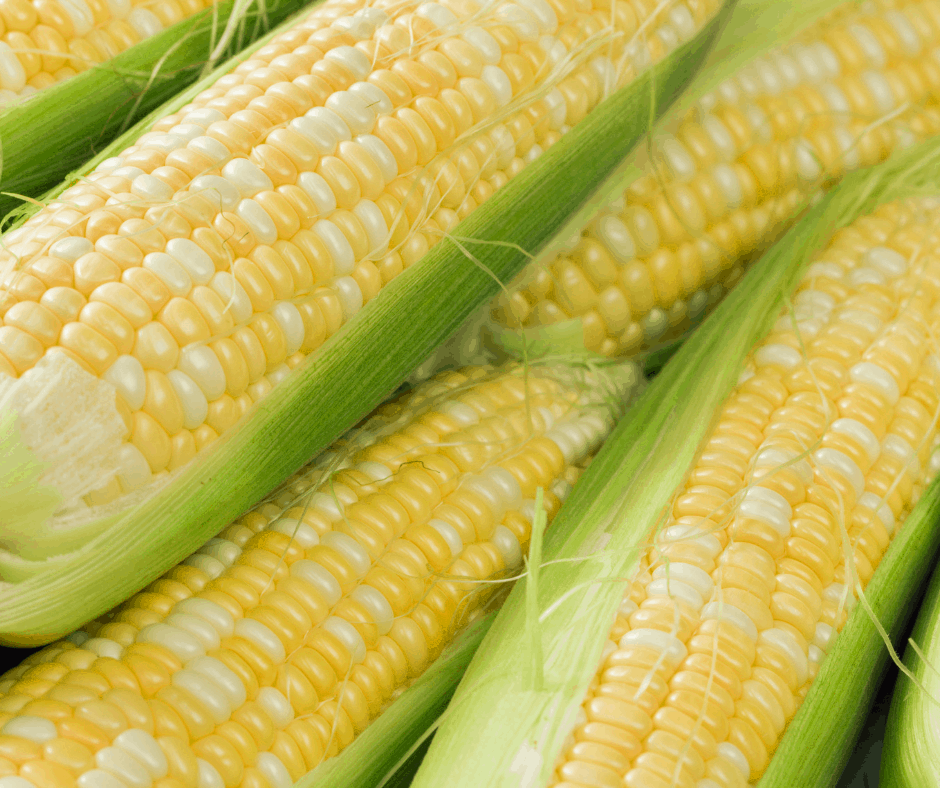
Sweet corn is a fun addition to any Southern California garden. It does require some space, so most people plant small amounts as a novelty crop.
In order for sweet corn to pollinate, it is really best to have multiple rows of corn in a small patch of ground. 25 square feet with four rows of corn is an ideal minimum.
You can grow a smaller number of stalks, but hand pollination would be needed. Nearly all varieties of corn grow well in Southern California and since our growing season is long, you can grow rows in succession, beginning in March.
11. Beets
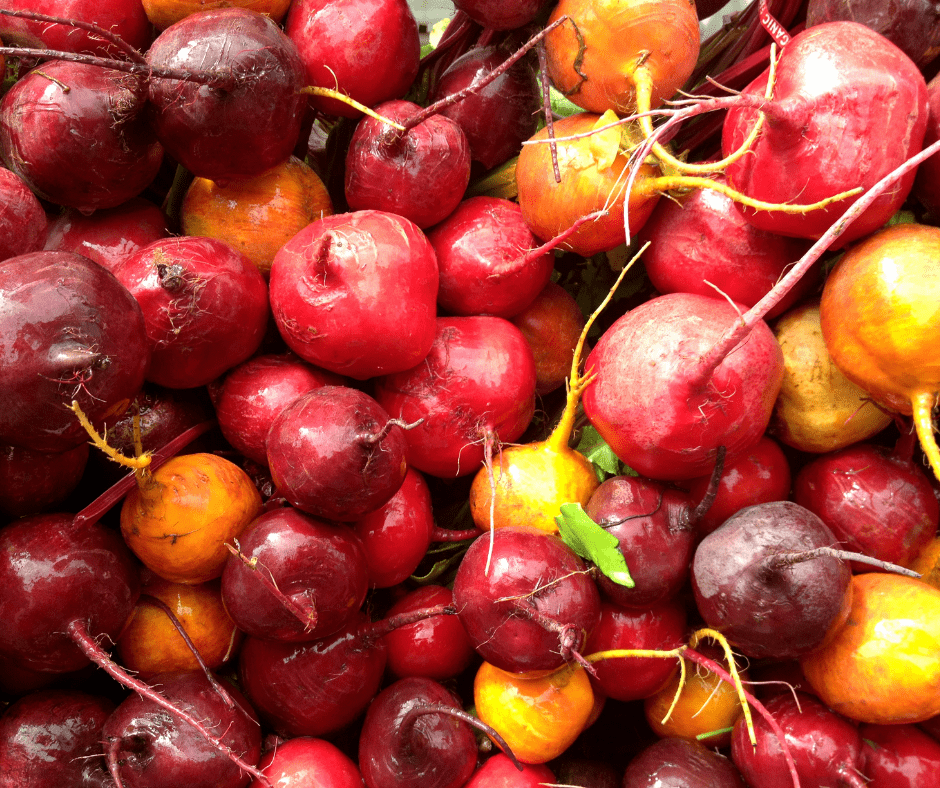
Beets are one of the best root vegetables to grow in Southern California. Unlike some root vegetables, they don’t need much room and are very simple to grow.
I plant my beets in a window box with a drip line in the late fall. They require very little effort are ready to harvest by the end of the year, and are tasty from top to bottom.
You can sow another crop in January and February. Just be sure to harvest before the weather gets too warm.
I love planting Chiogga beets with their pink and white variegated spirals because they taste great and are so pretty when sliced.
12. Beans

Planting pole beans in your Southern California vegetable garden is a great way to restore nitrogen in the soil and enjoy something tasty at the same time.
It is important to plant beans when soil is warm (minimum 60 degrees). Beans, like fava, are especially good for adding nitrogen production, though you may still need to increase the nitrogen to have a big yield.
I have found that my beans do not like it when the temps get too hot (consistently above 90) in the late summer and this will definitely slow down or stop production.
During the late spring, when bean production should be high, check your vines frequently and pick the beans when young if you want to eat them fresh. If you want to dry them, you can let them begin to dry right on the vine if there is no rain in the forecast.
I have never planted a large crop of beans and thus have never enjoyed a huge bounty, so I tend to plant varieties that are fun colors like Dragon’s Tongue, that are tasty to eat raw or cooked like a typical green bean.
13. Cucumbers
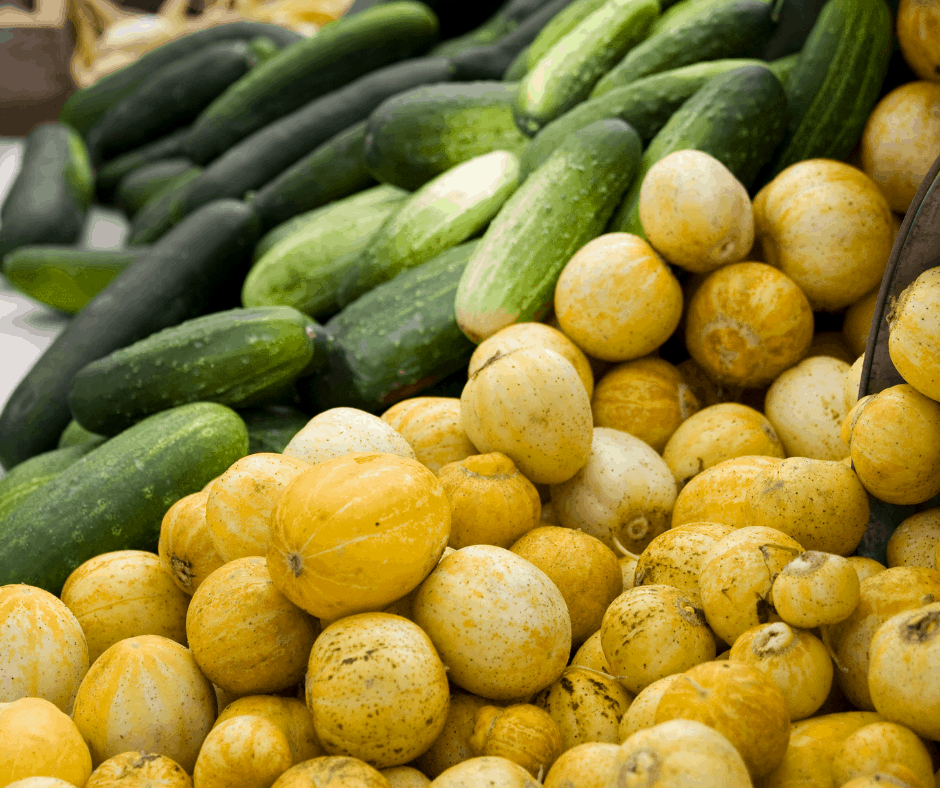
Cucumbers are definitely one of the best vegetables to grow in Southern California. They grow very easily as long as they are well-watered, and take up little space because they can be trellised.
I have found lemon cucumbers to grow like weeds in my backyard garden, producing quickly and consistently for months.
They have a distinctly different (and yes, lemony) flavor than regular cucumbers and should be picked when the skin is light yellow and not too orangy to avoid a woody skin.
Regular English or Perisan cucumbers grow quickly and easily as well, but the vines never seem to last long so the key to having a continuous cucumber crop is succession planting. Cucumbers mature around 50-70 days from planting.
14. Herbs
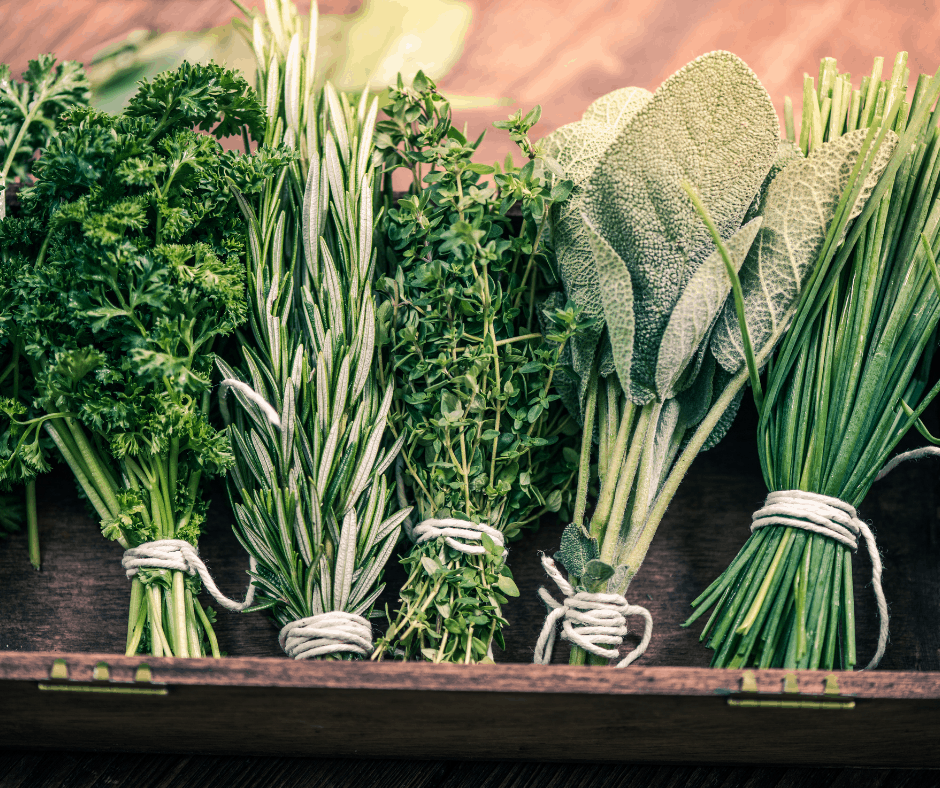
Yes, I know herbs aren’t technically a vegetable, but they really should be a part of your Southern California vegetable garden. Many herbs are incredibly easy to grow and take up little space.
Here are the 15 best herbs to grow in Southern California.
Plant the herbs that you use the most. I always have basil plant going. Be sure to pinch the flowers off your basil plant to increase leaf production and cut the whole things back once or twice during the growing season to promote new growth.
Parsley is another herb I always have growing in my raised beds. It is easy to grow and a common meal ingredient, so I like having it on hand.
Thyme is easy to grow and takes up relatively little space. It is a good one to plant in a container with other herbs like oregano and chives.
Sage grows wild in Southern California’s chaparral, so of course it would well in our home gardens. I like to plant attractive herbs like sage and lavender in my flower garden.
Rosemary can turn into a large hedge and is extremely hardy. It is also incredibly common in my neck of the woods, so I don’t grow it at home. I am lucky to always have a neighbor with a plant in their front yard who is happy to share.
Mint is another hardy herb, so hardy that it can become quite invasive if planted directly in the ground. Instead, pick out a couple of your favorite mint varieties (I like chocolate mint and pineapple mint) and plant them in containers.
Finally, no Southern California vegetable garden is complete without a little cilantro. It is a crucial ingredient in many Mexican dishes, and adds great flavor to everything from salsa to rice.
Cilantro prefers mild temperatures and will bolt (go to seed) quickly when the weather get warm. I plant cilantro in succession in my backyard during the cool months and start a kitchen window container of cilantro during the warm months.
]]>